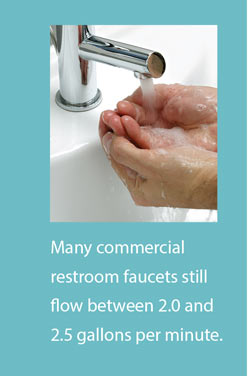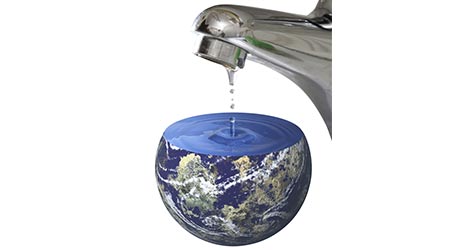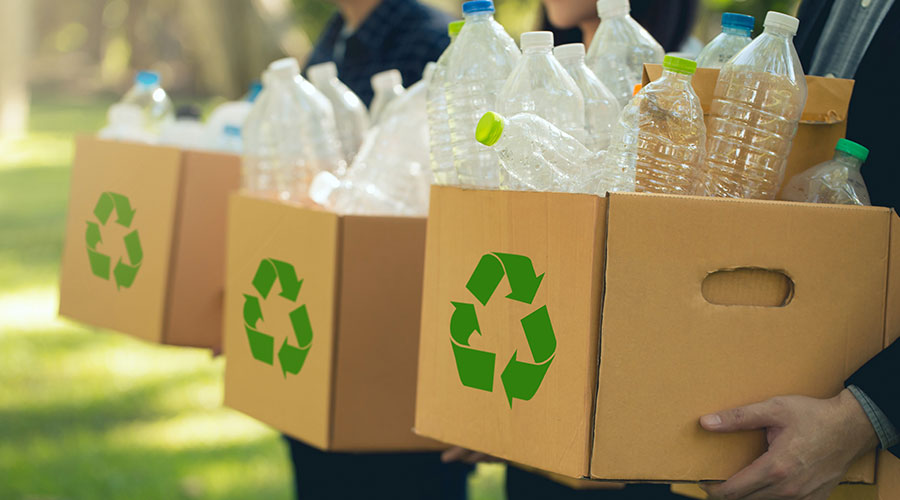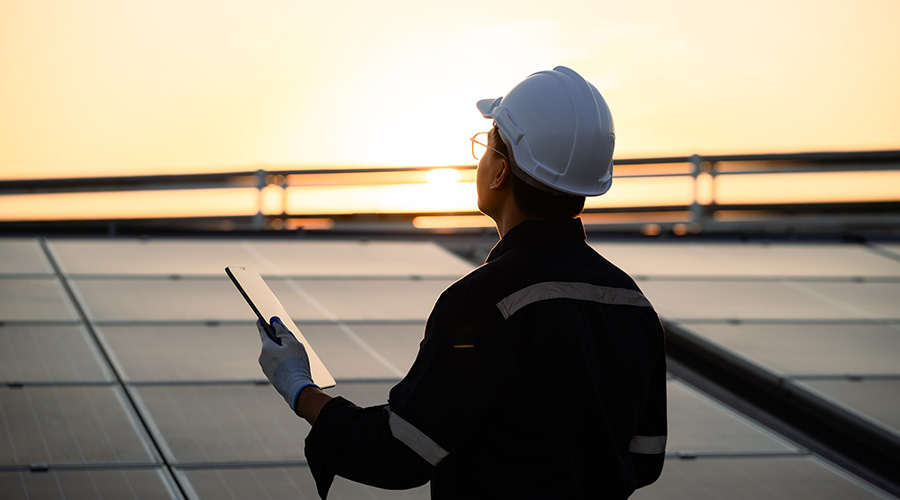How Using WaterSense Standards and Products Saves Water One Drop At a Time
First part of a two-part article on how EPA's WaterSense can help FMs save water and money.
As the need to conserve water increases, so too have new opportunities to save water, energy, and money. Whether in hospitals, offices, schools, or other facilities, restrooms are a major source of water use in all commercial and institutional buildings, accounting for anywhere from 30 to 45 percent of water use. In both public- and private-use restrooms, retrofitting and replacing restroom fixtures can lead to significant water and energy savings. The U.S. Environmental Protection Agency’s WaterSense program recommends that building owners and facility managers who are ready to take on the challenge (and benefits) of water efficiency consider installing a full suite of high performance, water-efficient restroom fixtures.
EPA launched WaterSense in 2006 to help consumers and other purchasers identify products that are independently certified to be at least 20 percent more water-efficient and perform as well as or better than standard models. Products that meet those criteria can earn the WaterSense label. Over the past decade, WaterSense-labeled tank-type toilets, faucets, faucet accessories, showerheads, flushing urinals, pre-rinse spray valves, and weather-based irrigation controllers have helped save more than 1.1 trillion gallons of water and $21.7 billion in water and energy bills.
While much of the program’s initial success is attributed to WaterSense-labeled residential plumbing products, the commercial sector presents even greater potential for water, energy, and financial savings. With the completion of its Specification for Flushometer-Valve Water Closets — also known as flushometer-valve toilets — WaterSense has labeled a full suite of products to help commercial and institutional buildings save water in restrooms.
Why conserve water?
Saving water cuts operational costs and can help maximize profit margins. Over the past decade, the costs of water and wastewater services have risen at a rate well above the consumer price index, making it more difficult for commercial and institutional buildings to plan for the future. When utility rates have the potential to vary widely, it is difficult to project future costs.

Saving water can also save energy and utility costs throughout a facility. Every gallon of water has an energy footprint associated with pumping, moving, treating, and heating that water. As a result, evaluating water and energy together can provide the greatest resource and cost savings. For example, despite code requirements that public-use faucets flow at a rate of 0.5 gallons per minute (gpm), many commercial restroom faucets still flow between 2.0 and 2.5 gpm. Installing 0.5 gpm faucet accessories such as flow restrictors, flow regulators, aerators, or laminar flow devices can save significant amounts of water without a noticeable difference in flow, while also saving the energy needed to heat that water.
For buildings in the midst of expansion or renovation, savings from increased water and energy efficiency can offset the increased utility costs that often accompany growth. And because WaterSense-labeled products and other water-efficient fixtures are available in a wide range of styles and price points that are comparable to their less efficient counterparts, specifying these products in facility expansion or renovation plans results in a net gain for the bottom line.
What’s more, many regions in the United States are facing the fallout of our changing climate, including persistent and severe droughts. In recent years, water restrictions and shortages have demanded new initiatives to decrease water use. A commitment to saving water can help facility management stay at the forefront of our nation’s growing emphasis on climate resiliency, while also showing a commitment to sustainability in the community. Reducing water use can also help a facility achieve green building certifications such as the U.S. Green Building Council’s LEED rating system for new building design and construction; existing building operations and maintenance; or interior design and construction.
SIDEBAR: WaterSense At Work
A compilation of water efficiency best management practices, WaterSense at Work: Best Management Practices for Commercial and Institutional Facilities, provides an overview of how commercial and institutional facilities can better manage their water use and identify projects to help them start saving.
Related Topics:














